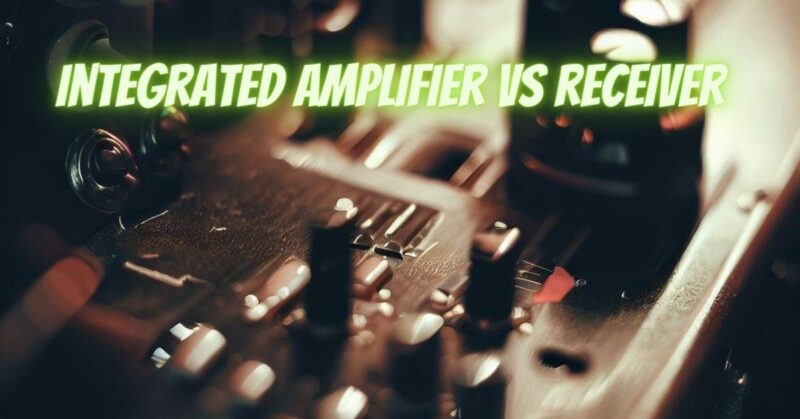In the world of audio equipment, amplification is the cornerstone of sound reproduction. When navigating the vast landscape of amplifiers, two terms often come into play: “amplifier” and “integrated amplifier.” These components play distinct roles in audio setups, each with its own set of features and advantages. In this article, we’ll delve into the differences between amplifiers and integrated amplifiers, helping you understand their functions, benefits, and which one might best suit your audio needs.
Amplifier:
An amplifier, often referred to as a power amplifier, is a device designed to amplify low-level audio signals to a level that can drive speakers or other output devices. Its primary purpose is to provide the necessary power to make the sound produced by your source equipment audible through speakers. Amplifiers are typically divided into different classes (e.g., Class A, Class AB, Class D) based on their operating principles and efficiency.
Advantages of Amplifiers:
- Power Delivery: Amplifiers are dedicated to providing power to speakers, ensuring that the sound is delivered with sufficient volume and clarity.
- Modularity: Separating the amplification stage from other audio components (such as preamplifiers and source components) allows for modular upgrades and customization of your audio system.
- Specialization: Dedicated amplifiers can be designed to excel in specific aspects of sound reproduction, such as delivering high power or achieving audiophile-grade sound quality.
Integrated Amplifier:
An integrated amplifier combines two essential components into a single unit: a preamplifier and a power amplifier. The preamplifier section handles the signal processing, volume control, and source selection, while the power amplifier section drives the speakers. Integrated amplifiers provide an all-in-one solution for audio enthusiasts who seek simplicity and efficiency in their setups.
Advantages of Integrated Amplifiers:
- Space and Convenience: Integrated amplifiers reduce the need for multiple separate components, saving space and simplifying your audio setup.
- Cost Efficiency: Combining a preamplifier and a power amplifier in a single unit can be more cost-effective than purchasing separate components.
- Matching Components: Integrated amplifiers are often designed with components that are optimized to work together, ensuring seamless compatibility and coherent sound quality.
Choosing Between Amplifiers and Integrated Amplifiers:
The choice between a dedicated amplifier and an integrated amplifier depends on your specific audio requirements, preferences, and goals:
- Audio Setup: If you already have a preamplifier, source components, and only need to upgrade your power delivery, a dedicated amplifier might be the right choice.
- Simplicity: If you prefer a streamlined setup and want to minimize the number of components, an integrated amplifier offers convenience without sacrificing sound quality.
- Customization: If you enjoy mixing and matching different components for a personalized setup, a dedicated amplifier might provide more flexibility.
Amplifiers and integrated amplifiers cater to different audio preferences and setups. Whether you opt for a dedicated amplifier to maximize power delivery or choose an integrated amplifier for its convenience, the key is to align your choice with your audio goals. Both options offer their own set of benefits, and the best choice depends on your individual needs, available space, and desired sound quality. As you explore the world of audio equipment, keep in mind that the ultimate goal is to create an audio system that brings you joy and an immersive listening experience.


